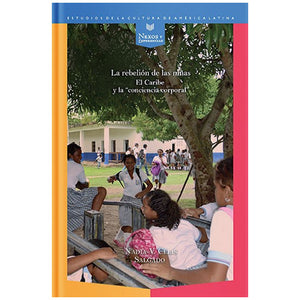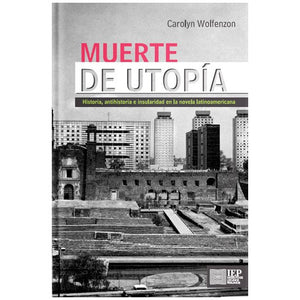{"id":32910722,"title":"Red to Green — Henry","handle":"red-to-green-environmental-activism-in-post-soviet-russia","description":"\u003cspan style=\"font-weight: bold;\"\u003eBy Laura A. Henry\u003c\/span\u003e\u003cbr style=\"font-weight: bold;\"\u003e \u003cstrong\u003e\u003ca href=\"http:\/\/www.bowdoin.edu\/faculty\/l\/lhenry\/\"\u003eJohn F. and Dorothy H. Magee Associate Professor, \u003c\/a\u003e\u003cnobr\u003eGovernment And Legal Studies\u003c\/nobr\u003e\u003cbr\u003e \u003cbr\u003e \u003c\/strong\u003e\u003cspan style=\"font-style: italic;\"\u003eRed to Green\u003c\/span\u003e goes beyond familiar debates about the strength and weakness of civil society in Russia to identify the contradictory trends that determine the political influence of grassroots movements. In an organizational analysis of popular mobilization that addresses the continuing role of the Soviet legacy, the influence of transnational actors, and the relevance of social mobilization theory to the Russian case, Laura Henry details what grassroots organizations in Russia actually do, how they use the limited economic and political opportunities that are available to them, and when they are able to influence policy and political practice. Drawing on her in-depth interviews with activists, Henry illustrates how green organizations have pursued their goals by \"recycling\" Soviet-era norms, institutions, and networks and using them in combination with transnational ideas, resources, and partnerships.\u003cbr\u003e - From the back cover.\u003cbr\u003e \u003cbr\u003e Paperback.","published_at":"2018-03-28T10:42:01-04:00","created_at":"2011-02-22T11:05:24-05:00","vendor":"vendor-unknown","type":"Book","tags":["Bowdoin Faculty","History"],"price":2550,"price_min":2550,"price_max":2550,"available":true,"price_varies":false,"compare_at_price":2495,"compare_at_price_min":2495,"compare_at_price_max":2495,"compare_at_price_varies":false,"variants":[{"id":77672882,"title":"Default","option1":"Default","option2":null,"option3":null,"sku":"WBF174-Henry","requires_shipping":true,"taxable":true,"featured_image":null,"available":true,"name":"Red to Green — Henry","public_title":null,"options":["Default"],"price":2550,"weight":0,"compare_at_price":2495,"inventory_quantity":1,"inventory_management":"shopify","inventory_policy":"deny","barcode":"9780801476419","requires_selling_plan":false,"selling_plan_allocations":[]}],"images":["\/\/store.bowdoin.edu\/cdn\/shop\/products\/wba174-henry-red.jpg?v=1614799820"],"featured_image":"\/\/store.bowdoin.edu\/cdn\/shop\/products\/wba174-henry-red.jpg?v=1614799820","options":["Title"],"media":[{"alt":"Red to Green by Laura Henry","id":20239812001881,"position":1,"preview_image":{"aspect_ratio":0.658,"height":550,"width":362,"src":"\/\/store.bowdoin.edu\/cdn\/shop\/products\/wba174-henry-red.jpg?v=1614799820"},"aspect_ratio":0.658,"height":550,"media_type":"image","src":"\/\/store.bowdoin.edu\/cdn\/shop\/products\/wba174-henry-red.jpg?v=1614799820","width":362}],"requires_selling_plan":false,"selling_plan_groups":[],"content":"\u003cspan style=\"font-weight: bold;\"\u003eBy Laura A. Henry\u003c\/span\u003e\u003cbr style=\"font-weight: bold;\"\u003e \u003cstrong\u003e\u003ca href=\"http:\/\/www.bowdoin.edu\/faculty\/l\/lhenry\/\"\u003eJohn F. and Dorothy H. Magee Associate Professor, \u003c\/a\u003e\u003cnobr\u003eGovernment And Legal Studies\u003c\/nobr\u003e\u003cbr\u003e \u003cbr\u003e \u003c\/strong\u003e\u003cspan style=\"font-style: italic;\"\u003eRed to Green\u003c\/span\u003e goes beyond familiar debates about the strength and weakness of civil society in Russia to identify the contradictory trends that determine the political influence of grassroots movements. In an organizational analysis of popular mobilization that addresses the continuing role of the Soviet legacy, the influence of transnational actors, and the relevance of social mobilization theory to the Russian case, Laura Henry details what grassroots organizations in Russia actually do, how they use the limited economic and political opportunities that are available to them, and when they are able to influence policy and political practice. Drawing on her in-depth interviews with activists, Henry illustrates how green organizations have pursued their goals by \"recycling\" Soviet-era norms, institutions, and networks and using them in combination with transnational ideas, resources, and partnerships.\u003cbr\u003e - From the back cover.\u003cbr\u003e \u003cbr\u003e Paperback."}
Red to Green — Henry
Related Products
Sabor Judío — Boyle
$40.00
Lección Errante — Celis
$26.00
I, Grape — Clarke
$17.00
Shen Gua’s Empiricism — Zuo
$49.95












